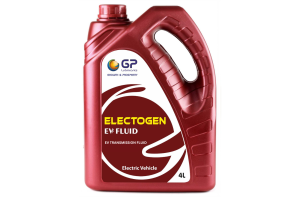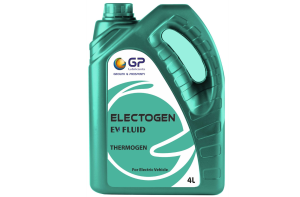Key Features and Benefits of GP EV Coolants:
Superior Heat Transfer:
GP EV Coolants are designed with high thermal conductivity, ensuring optimal heat dissipation from vital components like batteries, electric motors, and inverters. This allows the vehicle to maintain optimal performance and protects against overheating, which could compromise efficiency and component lifespan.
Extended Battery Life:
Proper thermal management of the battery system is crucial for the longevity and efficiency of the battery pack. GP EV Coolants ensure the battery temperature is maintained within safe operating limits, preventing thermal runaway and capacity degradation over time.
Efficient Thermal Stability:
These coolants are formulated to handle a wide range of temperatures, from the extreme cold of winter to the high heat of urban driving in summer. This helps maintain stable performance of the electric drivetrain and keeps the vehicle systems operating at their peak efficiency under varying conditions.
Corrosion and Wear Protection:
GP EV Coolants are engineered to protect against corrosion, oxidation, and scale buildup in critical components such as the radiators, heat exchangers, and cooling pipes. This extends the lifespan of the cooling system and prevents costly repairs and maintenance.
Environmentally Safe:
GP EV Coolants are non-toxic and biodegradable, making them safer for both the environment and the personnel handling the fluid during routine maintenance. They do not contain harmful substances like silicates, phosphates, or amine compounds.
Compatibility with EV Systems:
The coolant is designed to be compatible with the unique components of electric vehicles, including liquid cooling systems for batteries, electric motors, and power inverters. It maintains efficient heat transfer without harming sensitive electronic parts or connectors.
Low Viscosity for Efficient Flow:
GP EV Coolants have a low viscosity which allows them to flow easily through the cooling system, even in colder environments. This ensures that the coolant can circulate effectively, providing reliable cooling performance at all temperatures and driving conditions.
High Performance Under Stress:
During periods of high load, such as fast acceleration or heavy driving, EV and HEV systems can generate significant heat. GP EV Coolants maintain thermal stability under such conditions, ensuring the vehicle’s components stay within optimal temperature ranges for long-lasting efficiency.
Applications:
Electric Vehicle (EV) Battery Systems:
GP EV Coolants are ideal for use in battery cooling systems, where maintaining temperature control during charging and discharging cycles is critical to preserve battery health and performance.
Electric Drivetrain and Power Electronics:
These coolants also manage the temperature of electric motors, power inverters, and other electronic components, helping to prevent overheating and performance degradation in demanding driving conditions.
Hybrid Electric Vehicles (HEVs):
In hybrids, where both an electric motor and an internal combustion engine (ICE) are used, GP EV Coolants ensure efficient cooling of the electric motor and battery, even when the internal combustion engine is operating alongside the electric components.
Commercial Electric Vehicles (EVs):
GP EV Coolants are highly effective in heavy-duty electric vehicles, such as electric trucks, electric buses, and electric construction equipment, where large batteries and high-torque motors need continuous thermal regulation to maintain efficiency and reliability under challenging operational conditions.
Fast-Charging Infrastructure:
The coolant can also be used in high-power charging stations, which require robust thermal management to handle the heat generated during fast charging.





